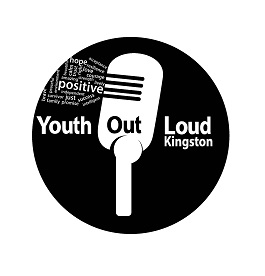TNC was contracted by United Way KFL&A to help them develop an Action Plan to End Youth Homelessness in Kingston and Area. This project was part of a national program called Mobilizing Local Capacity to End Youth Homelessness (MLC), being led by Eva’s Initiatives, the National Learning Community on Youth Homelessness, the Canadian Housing and Renewal Association, and the Catherine Donnelly Foundation. I was proud to work alongside United Way KFL&A on this project. To read the Draft Action Plan and learn about our process, click here!

The purpose of the program is to significantly change the course of youth homelessness locally and across the country. Over a five-year period, the program will draw on the resources of this unique partnership to:
- Build community awareness about youth homelessness;
- Support and assist communities to develop and implement plans that will prevent, reduce and end youth homelessness;
- Facilitate linkages and foster effective networks and collective action to combat youth homelessness;
- And promote systemic change to Canadian public policies impacting on youth homelessness.
United Way KLF&A’s leadership demonstrates the very important understanding of the need for cities to create youth focused action plans to end homelessness. While some cities have taken the initiative to develop youth focused plans prior to the inception of the MLC program (hats off to Calgary and Toronto), many cities in Canada have been operating under the assumption that what works for adults works for youth. This assumption has serious consequences. Here is why…
Approximately 1 in 3 persons experiencing homelessness in Canada are unaccompanied youth, defined as those between the ages of 16 and 24 who are without adult supervision, and 1 and 5 shelter users are youth [1]. These findings are concerning given that youth are among the most vulnerable of groups who experience homelessness. Their level of development and life experience renders them particularly vulnerable to entrenchment into street life. Youth are physically, emotionally, psychologically, spiritually and socially still developing. This means they are entering homelessness at a time when they are still forming their identity and trying to understand who they are and what they value[2]. Consequently, homeless youth are particularly vulnerable to criminal victimization and sexual exploitation[3]. Youth also enter homelessness with fewer life skills, such as employment, cooking, or money management skills[4]. The lack of skills in these areas means it is more difficult for youth to transition from homelessness to independence without considerable support. Researchers have found that without effective intervention within the first two weeks of street involvement, youth will likely become entrenched within two months[5]. Entrenched street youth face more serious risks, are more heavily involved in illegal activities, and are much more difficult to engage and to serve[6]. There is a need for innovative programs and projects that target young people who are within this two-week critical intervention period.
Youth is also characterized by different experiences than adulthood. Adolescence is a period when youth are drawn to exploration and experimentation[7]. It is therefore imperative that young people are equipped with the knowledge, skills, and abilities necessary to experiment and explore without life-altering consequences. There are key building blocks of healthy development, known as Developmental Assets, that outline what environments need to offer youth so that they can become independent and positively transition to adulthood. For example, environments need to offer:
- Meaningful participation;
- Opportunities for engagement;
- Constructive use of time;
- Healthy and caring relationships;
- Supportive mentors and role models;
- Positive peer influences;
- High expectations;
- Safety;
- And accessibility (universal, physically accessible, financially accessible, and available at the times needed)[8].
When young people experience the assets outlined above, they are less likely to engage in a wide range of high-risk behaviors and are more likely to thrive. For example, research shows that youth with the least assets are most likely to engage in problem alcohol use, violence, and drug use[9] [10]; issues that have been found to put youth at risk of homelessness[11]. On the other hand, when youth have higher levels of assets, they are more likely to do well in school and be civically engaged[12] [13]; factors that are correlated with housing stability[14]. These findings underscore the need for housing plans that are tailored to youth, reflect developmental assets, and an understanding of what is required to support the positive development of young people. The findings also demonstrate that the needs and characteristics of youth, as well as the assets youth require, pose unique challenges to housing. Just as adults do, homeless youth need safe, accessible, consistent, and appropriate physical shelter. However, the provision of housing alone will not solve the problem. Housing must be coupled with extensive supports that enhance developmental assets and prepare youth for independence. It is also important to consider how variations in age influence housing. In the MLC project, anyone between the ages of 15-24 is considered a “youth”. There are great differences between 15 and 24 year olds in terms of life experience, desires, interests, and needs. For example, a 15-17 year old may require more supervision and structure than an 18-24 year old. For these reasons, in comparison to adult strategies that may call for fewer options, it is important to incorporate diverse housing options in any housing strategy supporting youth.
Lastly, the average Canadian cannot afford a youth to be homeless. One study found that each youth experiencing homelessness is reflected in an annual taxpayer burden of $13,900[15] and an annual social burden of $37,450[16]. Once these youth reach the age of 25, it is estimated that they will impose a future lifetime taxpayer burden of $148,790 and a future lifetime social burden of $461,020. Altogether, the lifetime cost of each homeless youth is over $1 million[17]. Creating a plan that focuses on strategies designed to ensure youth are stably and sustainably housed is one way of preventing future chronic homelessness and ending homelessness in Canada altogether.
Bottom line- youth have unique developmental needs and are best served by youth-specific services, not by being treated as adults. Ineffective and misdirected services lead to increased costs on the system and wasted taxpayer dollars[18]. Staring early pays off-a focus on youth means that currently homeless youth do not become tomorrow’s chronically homeless adults.
Talk soon,
Norah
[1] Gaetz, S. (2014). Coming of Age: Reimagining The Response to Youth Homelessness in Canada. Homeless Hub Report.
[2] Larson, R. W. (2000). Toward a psychology of positive youth development. American psychologist, 55(1), 170.
[3] Worthington, C. A., & MacLaurin, B. J. (2009). Level of street involvement and health and health services use of Calgary street youth. Can J Public Health,100(5), 384-88.
[4] The state of homelessness in Canada 2013. Homeless Hub, 2013.
[5] Worthington, C. A., & MacLaurin, B. J. (2009). Level of street involvement and health and health services use of Calgary street youth. Can J Public Health,100(5), 384-88.
[6] Kidd, S. A. (2003). Street youth: Coping and interventions. Child and adolescent social work journal, 20(4), 235-261.
[7] Larson, R. W. (2000). Toward a psychology of positive youth development. American psychologist, 55(1), 170.
[8] Scales, P. C., Benson, P. L., Leffert, N., & Blyth, D. A. (2000). Contribution of developmental assets to the prediction of thriving among adolescents. Applied developmental science, 4(1), 27-46.
[9] Leffert, N., Benson, P. L., Scales, P. C., Sharma, A. R., Drake, D. R., & Blyth, D. A. (1998). Developmental assets: Measurement and prediction of risk behaviors among adolescents. Applied Developmental Science, 2(4), 209-230.
[10] Fergus, S., & Zimmerman, M. A. (2005). Adolescent resilience: A framework for understanding healthy development in the face of risk. Annu. Rev. Public Health, 26, 399-419.
[11] Fergus, S., & Zimmerman, M. A. (2005). Adolescent resilience: A framework for understanding healthy development in the face of risk. Annu. Rev. Public Health, 26, 399-419.
[12] Leffert, N., Benson, P. L., Scales, P. C., Sharma, A. R., Drake, D. R., & Blyth, D. A. (1998). Developmental assets: Measurement and prediction of risk behaviors among adolescents. Applied Developmental Science, 2(4), 209-230.
[13] Fergus, S., & Zimmerman, M. A. (2005). Adolescent resilience: A framework for understanding healthy development in the face of risk. Annu. Rev. Public Health, 26, 399-419.
[14] Fergus, S., & Zimmerman, M. A. (2005). Adolescent resilience: A framework for understanding healthy development in the face of risk. Annu. Rev. Public Health, 26, 399-419.
[15] The $13,900 includes homeless shelters, hospital bills, legal fees, cost of Children’s Aid workers, incarceration, etc.
[16] $37,450 represents all other indirect costs, such as lost taxes, lower productivity, lost wages, marginal excess tax burden, lower economic growth, etc.
[17] Belfield, C. R., Levin, H. M., & Rosen, R. (2012) The Economic Value of Opportunity Youth. The Kellogg Foundation.
[18] City of Kingston’s 10 Year Municipal Housing and Homelessness Plan.
